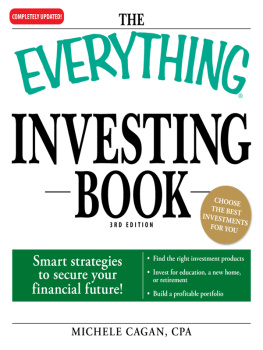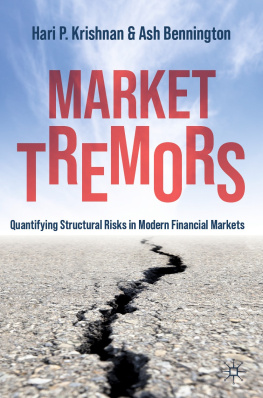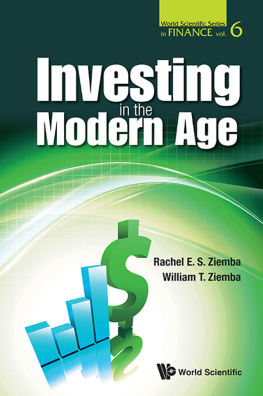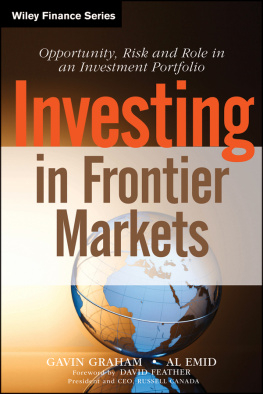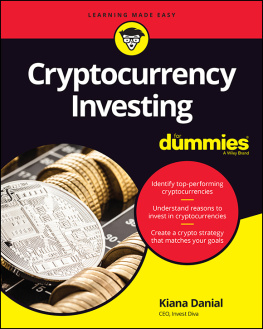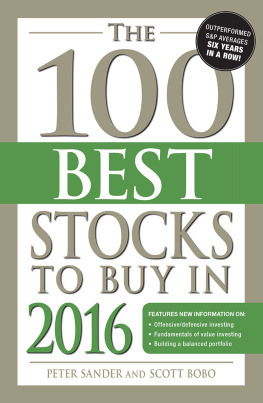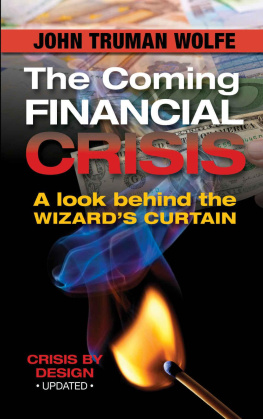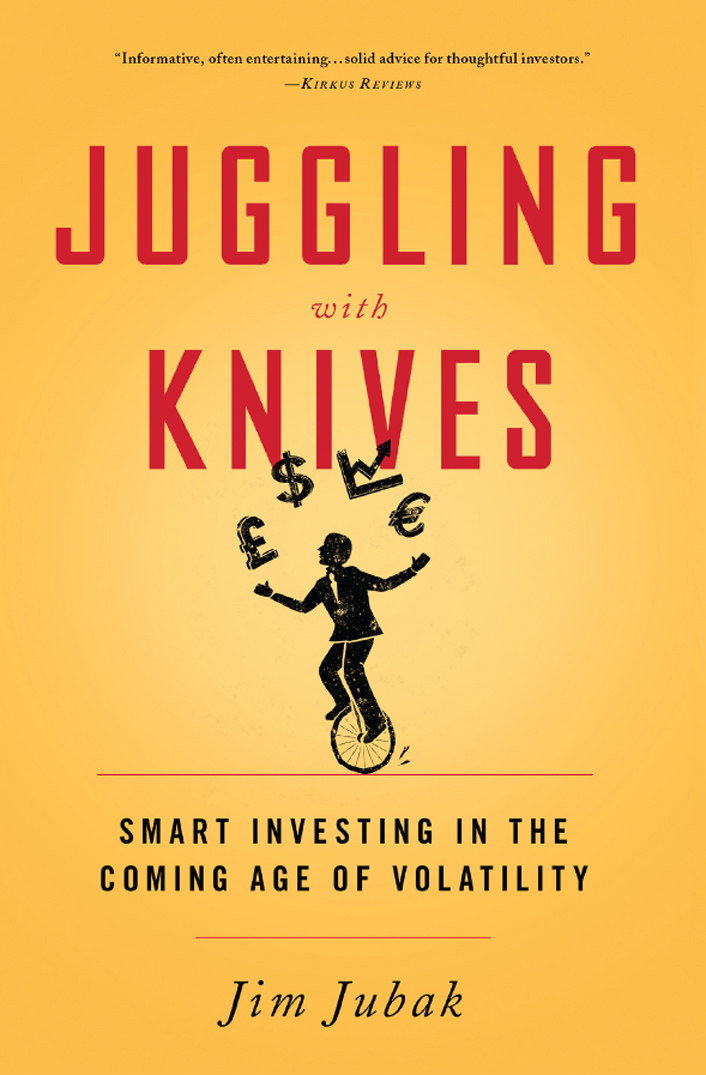JUGGLING WITH KNIVES

Copyright 2016 by Jim Jubak.
Published in the United States by PublicAffairs, a Member of the Perseus Books Group
All rights reserved.
Printed in the United States of America.
No part of this book may be reproduced in any manner whatsoever without written permission except in the case of brief quotations embodied in critical articles and reviews. For information, address PublicAffairs, 250 West 57th Street, 15th Floor, New York, NY 10107.
PublicAffairs books are available at special discounts for bulk purchases in the U.S. by corporations, institutions, and other organizations. For more information, please contact the Special Markets Department at the Perseus Books Group, 2300 Chestnut Street, Suite 200, Philadelphia, PA 19103, call (800) 810-4145, ext. 5000, or e-mail .
Book Design by Trish Wilkinson
Set in 10.5 point Baskerville 10 Pro
Library of Congress Cataloging-in-Publication Data
Names: Jubak, Jim.
Title: Juggling with knives: smart investing in the coming age of volatility / Jim Jubak.
Description: New York: PublicAffairs, 2016. | Includes bibliographical references and index.
Identifiers: LCCN 2015040921| ISBN 9781610394819 (e-book)
Subjects: LCSH: Finance, Personal. | Investments. | StocksPrices. | BondsPrices. | BISAC: BUSINESS & ECONOMICS / Personal Finance / Investing.
Classification: LCC HG179 .J773 2016 | DDC 332.6dc23 LC record available at http://lccn.loc.gov/2015040921
First Edition
10 9 8 7 6 5 4 3 2 1
Table of Contents
Guide
Contents

ON APRIL 24, 2015, police in London arrested a thirty-six-year-old independent trader and charged him with causing the May 2010 flash crash that took the Dow Jones Industrial Average down 1,010 points in thirty-six minutes. Twenty minutes after it bottomed at 2:47 p.m. New York time, the market had recouped almost 600 points of that loss. It was the largest intraday plunge in the more than hundred-year history of the index, and the lossmuch of it temporary for anyone who held on but certainly not for those who panicked and soldcame to a trillion dollars.
How was this possible?
Two theories reigned after the arrest of Navinder Singh Sarao.
First: It wasnt possible for one person to take the markets down. Regulators, these theorists held, had fastened onto Sarao as a scapegoat for their own lack of oversight and inability, even five years after the flash crash, to explain how it happened. How likely was it, the scapegoat theorists asked, that a guy who traded using a customized version of off-the-shelf trading software from his modest home in a drab London suburb and with relatively modest capital could have taken down the US stock market?
Second: It was indeed possible. The market is so unregulated in some corners, so dominated by electronic trading platforms run by computers, and so illiquid these days that it doesnt take much to start an avalanche of selling or buying. Sarao could indeed have set the ball rolling and then watched it speed downhill.
Thats not much of a choice. Either current markets are so complex that no one can explain why they behave the way they dowhich means we could have another flash crash tomorrowor markets are so structurally unsound that anybody with a terminal can crash them tomorrow, either intentionally or by mistake.
There is also a third theory, one that informs the spine of this book, to explain the flash crash: a combination of financial market causesranging from structural weakness in the markets to the effects of a tidal wave of central bank cash sent flooding through markets and economies to end the Great Recessionand real-life causesranging from the aging world population to hoarding economics for food, water, and energyhas created an Age of Volatility. It is an age characterized by rates of volatility significantly above the normal range of volatility cycles we have experienced in the more than thirty-five years since Federal Reserve Chairman Paul Volcker smashed runaway inflation by driving interest rates to double digits in the late 1970s and early 1980s.
This alternative is not especially cheerful, as there is no quick way to push financial market volatility back down to historical levels and because this volatility will be found in all parts of everyday life, from housing to jobs to education to what we eat and drinkand, of course, what we pay for it.

TO UNDERSTAND WHY THIS Age of Volatility will be so disruptive and so scary, we need to understand exactly what volatility is and isnt. Lets start with an analogy:
Which is faster: a bullet train or a roller coaster?
Easy, right? Bullet trains routinely travel at 200 miles per hour or more. And the fastest roller coaster in the world, the Formula Rossa in Abu Dhabi, comes in at a speed of 149 miles per hour.
Now, which is more volatile?
It takes an N700 Shinkasen bullet train in Japan two minutes to hit 170 miles per hour.
The Formula Rossa goes from 0 to 149 miles per hour in five seconds. No wonder riders are required to wear goggles so a random bug doesnt result in permanent eye damage. A hydraulic launch similar to those on aircraft carriers sends passengers on their way. And to make the ride even more of a thrill, after takeoff the cars climb a hill that reduces their speed to just 60 miles per hour before the Formula Rossa speeds up again.
But when it comes to volatilitythe speed of a change in speedmaybe the Dodonpa roller coaster in Yamanashi, Japan, wins the prize. Although its top speed is only 107 miles per hour, it goes from 0 to 107 in just 1.8 seconds. Its no longer the fastest roller coaster in the world, as it was when it was built in 2001, but it still holds the record for the fastest acceleration.
In comparison to the Formula Rossa or the Dodonpa, a bullet train is smooth and unscary. As you roll through the Japanese, Chinese, or French countryside at 200 miles per hour, you dont have a sense of traveling all that fast. Even the acceleration into and out of train stations is gradual and gentle.
If youre looking for terror, for disorientation, for a mind-numbing concentration on the now, and for fear that makes you want to do the irrational (like release the safety harness), a roller coaster beats a bullet train hands down.
Volatility is scarier than speed. Whether its roller coasters, social change, or financial markets, abrupt changes of acceleration and direction are much more emotionally draining and much more likely to produce irrational responses than mere speed is.
Unfortunately.
Because were living through an era of extreme volatility in the financial markets and, Id argue, in national and global economies as a whole.
And, unfortunately, because, as important as volatility is to financial marketsand, new neurobiological research says, to the way we think, the kinds of decisions we make, and how happy, stressed, rational, or fearful we areour understanding of volatility is still rudimentary. Thats true in the financial markets, even with all the work that analysts and statisticians have put in to develop indexes that track volatility. And its even truer for life in general, where understanding volatility and its effects are largely matters of anecdote and feel.


